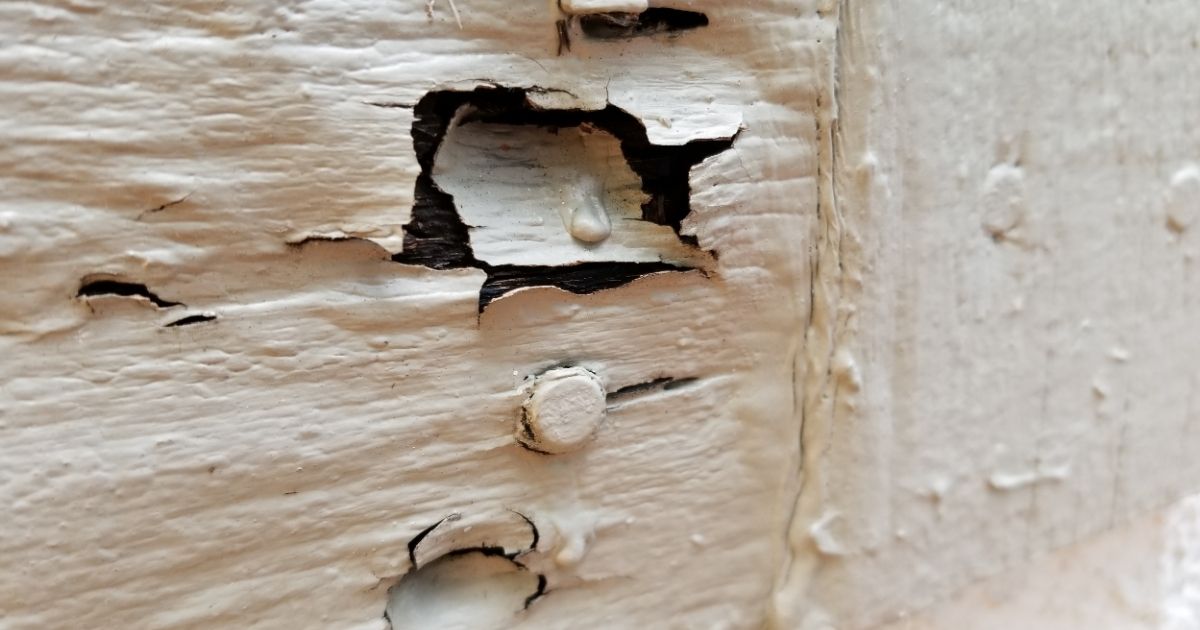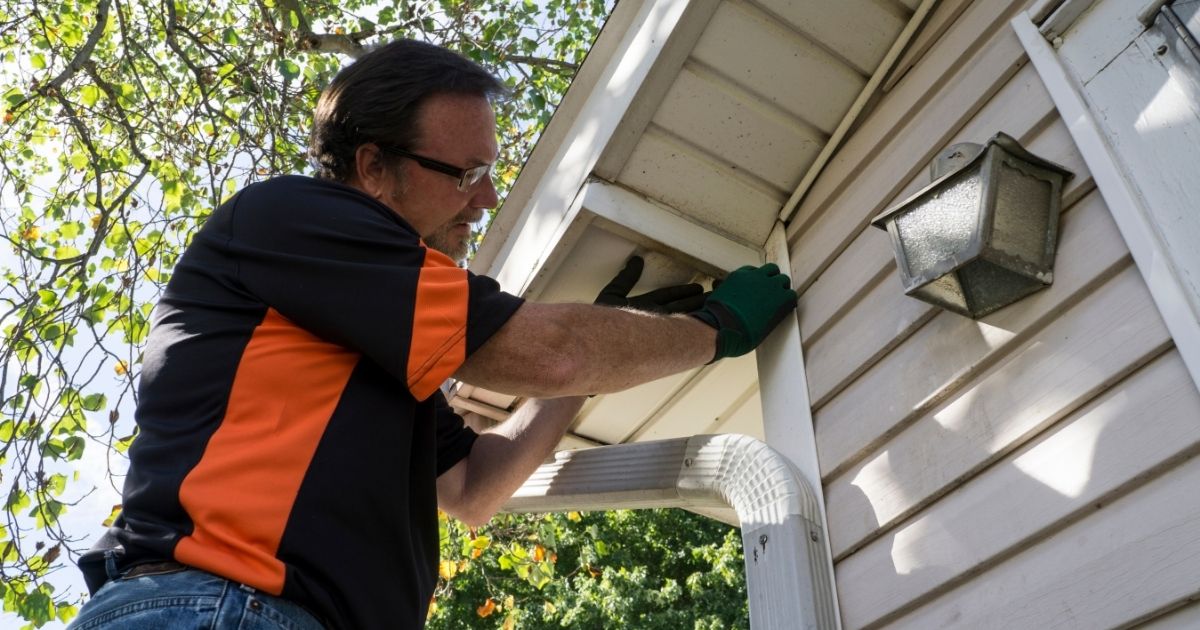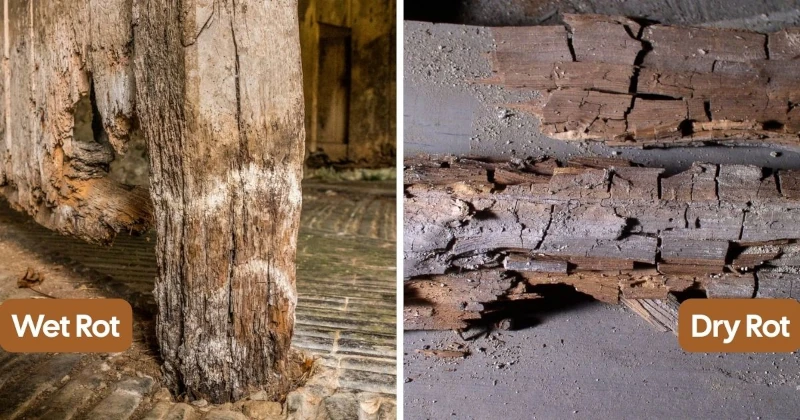Your home’s siding does more than make your house look good—it shields your walls, keeps out moisture, and helps maintain a comfortable indoor environment. But when siding starts to rot, especially due to dry rot, it’s not just a cosmetic issue.
Rotten siding can lead to bigger problems like structural damage, mold, and even higher energy bills. If you're dealing with dry rot or rotten siding, you might wonder: should you repair it, or is it time to replace it altogether?
In this guide, we’ll walk you through everything you need to know about siding repair versus replacement. We’ll talk about the causes of rotten siding, how to spot the signs, and the steps to fix or replace it.
Let’s dive in!
What Causes Siding to Rot?
Rotten siding doesn’t just happen overnight. Moisture is the main culprit, but several factors contribute to this problem:
- Weather Conditions:
- Prolonged exposure to rain, snow, and humidity creates the perfect environment for rot to develop. Over time, water seeps into cracks or gaps in your siding, allowing moisture to penetrate deeper.
- Improper Siding Installation:
- If siding is installed incorrectly, it can leave gaps or misaligned panels. This allows water to sneak behind the material, where it can cause problems.
- Dry Rot:
- This fungal decay specifically targets wood siding. The fungus feeds on the fibers of the wood, leaving it brittle and weak. Dry rot thrives in damp areas with poor ventilation, and you’ll often find it hidden beneath the surface.
- Poor Maintenance:
- Neglecting your home siding—like skipping regular cleaning and inspections—makes it more vulnerable to moisture damage. Over time, small problems like cracks or peeling paint can escalate into serious rot.
How to Spot Rotten Siding

Rotten siding can be tricky to detect because it often starts inside or behind the material. But with a little observation, you can spot the warning signs early:
1. Visible Damage
- Cracks, warping, or peeling paint on your siding.
- Holes or missing pieces in wood or vinyl siding.
2. Musty Smell
- A damp, earthy smell near your walls could indicate trapped moisture.
3. Red Dust or Fruiting Body
- For wood siding, dry rot may leave behind a reddish, powdery residue or even small mushrooms growing on the surface.
4. Mold or Mildew
- Dark stains or spots on your siding are often a sign of water damage and potential rot.
5. Soft Spots
- Push on your siding. If it feels soft or spongy in certain areas, the wood beneath could be rotting.
6. Gaps Around Doors and Windows
- Rot often starts around openings like door frames, windows, or skirting boards, where water collects more easily.
Should You Repair or Replace Rotten Siding?
Once you’ve confirmed that your siding has dry rot, the next question is: can it be repaired, or do you need to replace it? Here’s how to decide.
When to Repair Siding
Siding repair is a great option if the damage is localized and hasn’t spread too far. Repairing small sections of rot can save you time and money.
Signs It’s Time to Repair:
- Localized Damage: Rot is confined to a small area and hasn’t spread to the entire wall.
- Minimal Dry Rot: If dry rot hasn’t compromised the structural integrity of the wood, it can often be treated with a fungicide and patched up.
- No Mold or Mildew: If there’s no mold spreading into your walls, a repair might be enough to fix the problem.
Repairing Wood Rot:
- Remove Damaged Sections: Cut out the rotted part of the siding.
- Apply Dry Rot Treatment: Use a fungicide to stop the rot from spreading.
- Replace or Patch: Insert a new piece of wood siding or patch up the area with epoxy filler.
- Seal and Paint: Seal the edges to prevent future moisture issues, then paint to match the rest of the siding.
Pros of Repair:
- Affordable: Repairing is less expensive than replacing an entire wall of siding.
- Preserves Original Materials: Perfect for maintaining the look of historic homes or matching older siding.
- Quick Fix: Repairs are faster than full replacements.
When to Replace Siding
Sometimes, siding damage is beyond repair. In these cases, replacing the affected panels—or all your siding—will provide a long-term solution.
Signs It’s Time to Replace:
- Widespread Rot: If the rot affects large portions of your siding, patching won’t hold up.
- Loss of Energy Efficiency: Rotten siding allows air to leak in and out, raising your energy bill.
- Mold or Mildew Problems: If rot has allowed moisture to penetrate your walls, replacement is often necessary to prevent health hazards.
- Damage to Door Frames and Windows: If the dry rot has spread to nearby openings, a more extensive repair might be needed.
Benefits of Replacement:
- Modern Materials: You can upgrade to more durable and energy-efficient options like vinyl siding or fiber cement siding.
- Boosts Curb Appeal: New siding can dramatically improve your home’s appearance.
- Long-Term Solution: Replacing old, damaged siding eliminates the root cause of the problem.
Exploring Different Types of Siding
When it’s time to repair or replace, choosing the right material is key. Here’s a quick look at popular options:
1. Wood Siding
- Good for Repairs: Easily patched or replaced in sections.
- Vulnerable to Rot: Requires regular maintenance to avoid future issues.
2. Vinyl Siding
- Durable and Affordable: Resistant to rot and moisture.
- Replacement-Friendly: Easy to install and matches most home styles.
3. Fiber Cement Siding
- Resistant to Rot: A long-lasting option for replacements.
- Energy Efficient: Helps insulate your home and lower heating and cooling costs.
How to Prevent Siding Rot in the Future

Whether you repair or replace your siding, keeping it in good shape is essential to avoid rot down the line.
Maintenance Tips:
- Inspect Regularly: Check for cracks, gaps, or signs of wear at least twice a year.
- Clean Your Siding: Remove dirt and debris that can trap moisture.
- Seal and Paint: Reapply paint or sealant to protect wood siding from water.
- Fix Leaks Around Openings: Ensure doors and windows are properly caulked to prevent water infiltration.
How We Can Help with Rotten Siding
At every step, we’re here to make the process simple and effective. Whether it’s a small wood rot siding repair or a complete siding replacement, we’ll help you choose the best option for your home.
Our Services Include:
- Dry Rot Treatment: We remove rot and prevent it from spreading.
- Siding Installation: Our team works with all types of siding, from vinyl to fiber cement.
- Customized Solutions: Whether you’re fixing skirting boards or upgrading your entire home siding, we’ll create a tailored plan.
Conclusion: Repair or Replace?
Deciding between siding repair and replacement depends on the extent of the damage, your budget, and your long-term goals. Repairs work well for small, localized problems, but replacements offer a fresh start with modern, durable materials.
Don’t let rotten siding drag down your home’s look, comfort, or efficiency. Reach out to us for an inspection, and we’ll help you choose the best solution. Together, we’ll keep your home protected, energy-efficient, and beautiful for years to come.
FAQs
What causes dry rot in siding?
Dry rot is caused by a fungus that thrives in damp or poorly ventilated areas. When moisture seeps into wood siding, it breaks down the fibers, leading to soft, crumbly, or discolored spots that spread over time.
How can I tell if my siding has dry rot?
Common signs include peeling paint, soft or spongy wood, musty odors, and cracks or holes in the siding. You may also notice discoloration or areas that crumble easily when touched.
When should I repair vs. replace dry rot siding?
Repair is best when dry rot is small, isolated, and hasn’t reached the framing underneath. If rot covers large sections, keeps returning, or compromises your home’s structure, full replacement is usually the safer, long-term solution.
What’s the best material to replace rotted siding with?
Fiber cement, composite, or treated wood siding are durable, moisture-resistant options. Each material varies in appearance, cost, and maintenance needs, so it’s best to consult a siding expert for recommendations based on your home’s conditions.
How can I prevent dry rot from returning after repairs?
Keep your siding sealed and painted, ensure gutters and caulking are in good shape, and fix leaks promptly. Regular inspections and proper ventilation will help prevent moisture buildup and stop dry rot from spreading again.

.png)



.svg%20fill.svg)












